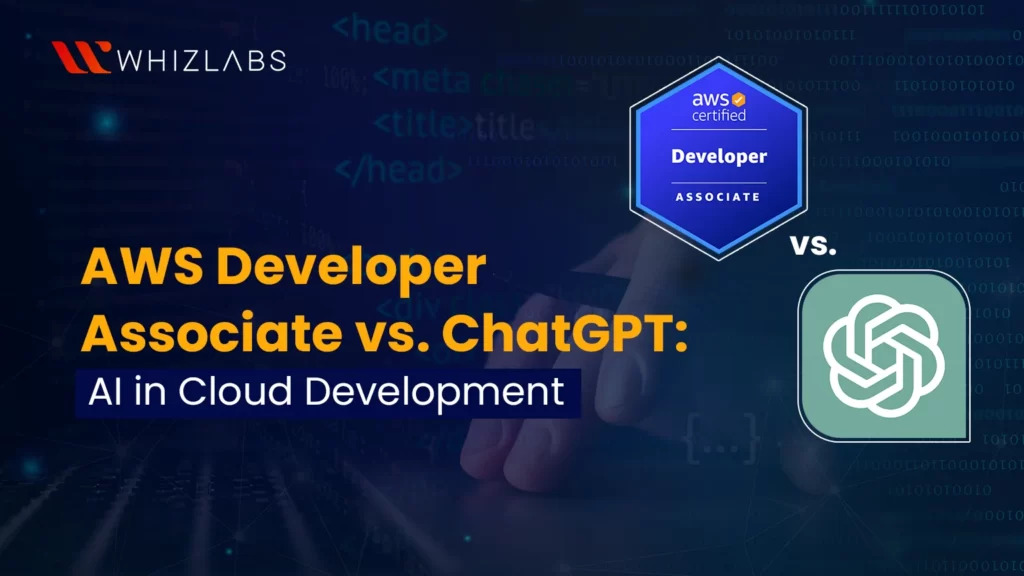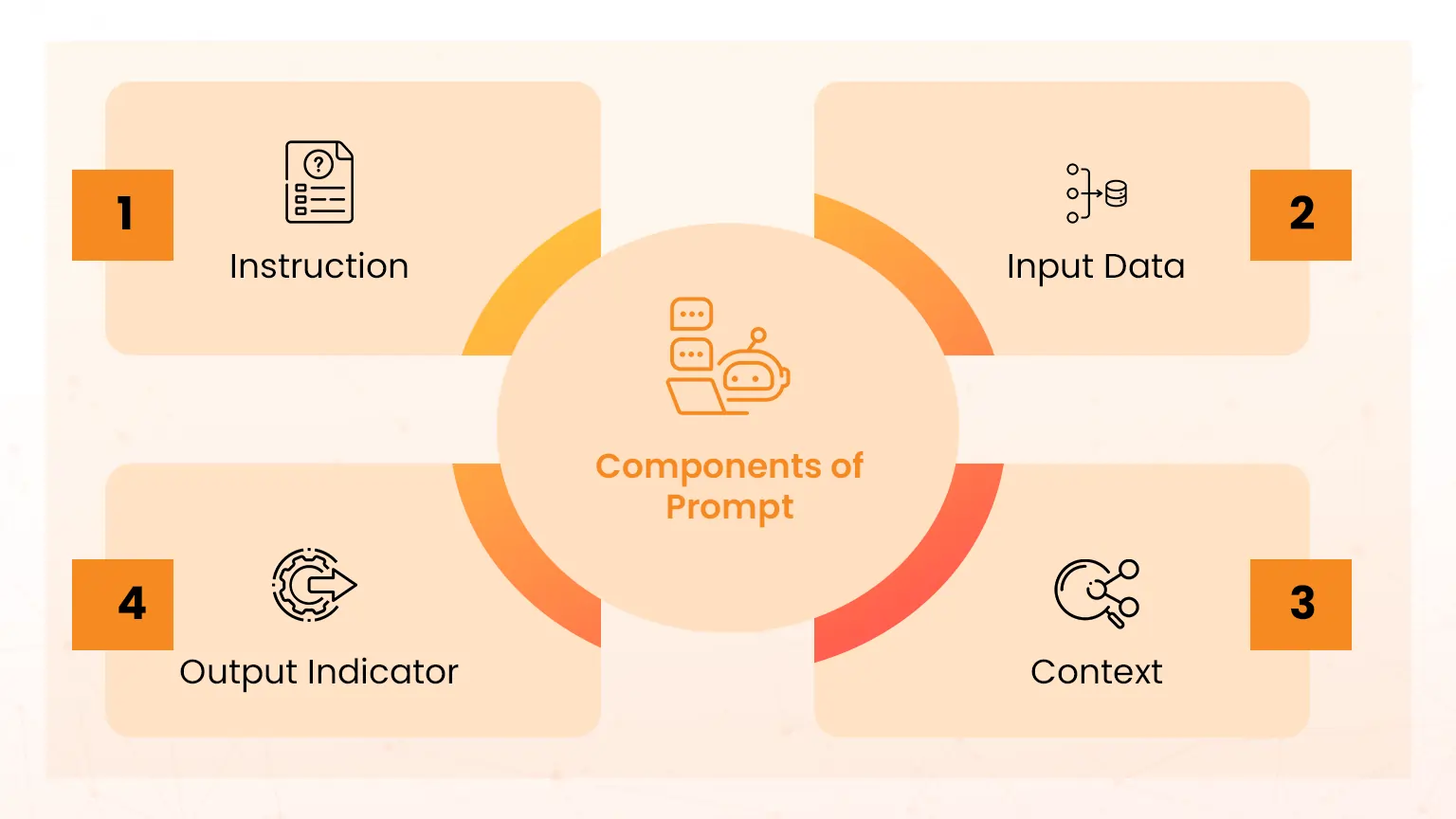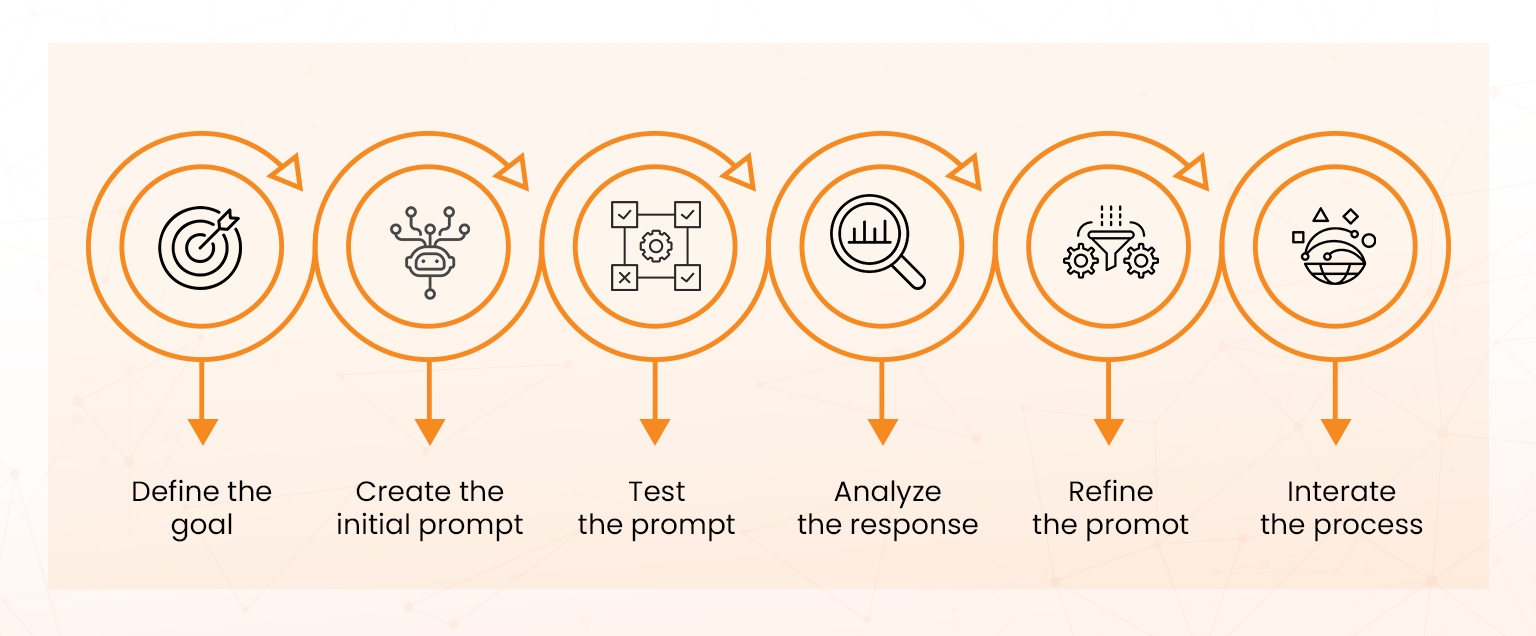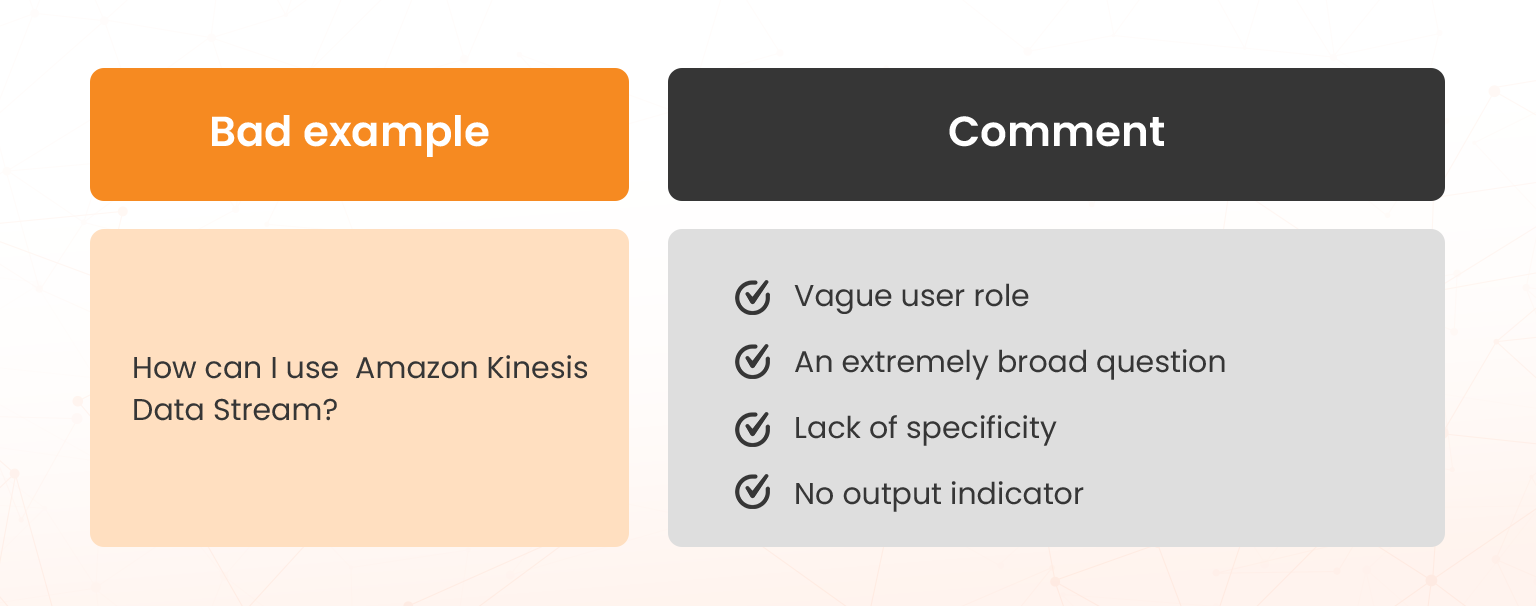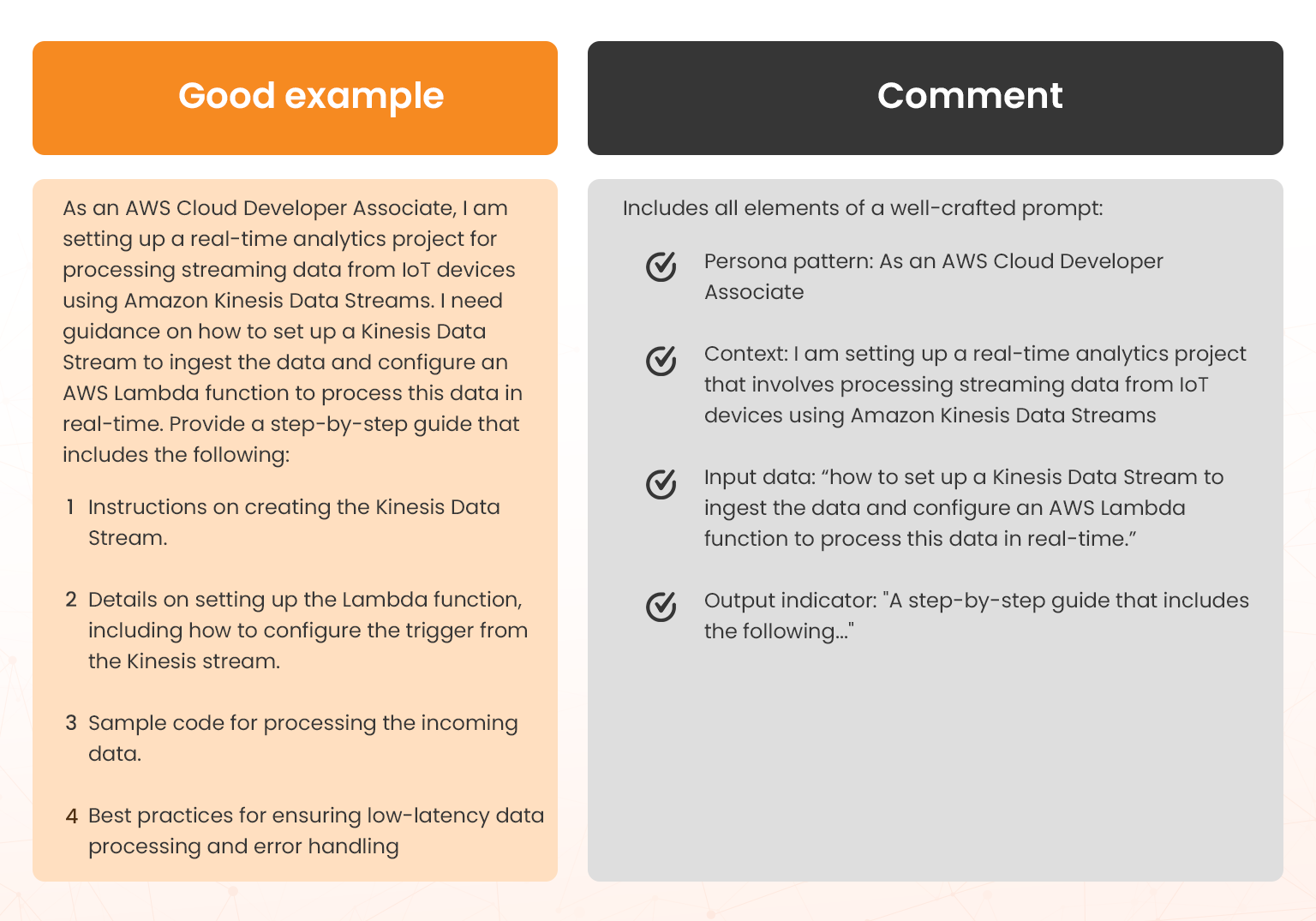In this blog, you’ll learn how to enhance your cloud development skills and stay ahead by utilizing ChatGPT’s capabilities. Cloud development covers building, testing, deploying, and managing software in the cloud, with cloud developers designing and deploying applications on platforms like AWS. Earning the AWS Certified Developer Associate certification equips you with the essential skills to excel in this field. Explore how ChatGPT can complement your expertise and streamline your development process.
How the AWS Developer Associate Certification Prepares You for Cloud Deployment
If you have practical experience using AWS for about a year or more, you can pursue the AWS Developer Associate certification. This intermediate-level training course is designed for developers who plan, build, and execute solutions in the cloud with AWS. Here are some of the roles and responsibilities of an AWS Developer Associate that the course prepares you for:
- Learn core AWS services, their key features, and how they integrate
- Develop, deploy, and debug cloud-based applications using AWS
- Write code for serverless applications
- Use AWS API, AWS CLI, and AWS SDK to write applications
- Apply AWS security best practices
- Troubleshoot and monitor applications for smooth functioning.
- Optimize the cost and performance of cloud applications.
Whether you’re a seasoned developer or just starting out in our AWS cloud journey, while carrying out your daily tasks, you might need a pair coder or a mentor who can assist you in designing and managing large-scale cloud deployments. As an AI language model, ChatGPT can be the mentor at your fingertips with 24/7 availability.
Role of ChatGPT in Cloud Development
ChatGPT is one of the most popular text-to-text generative AI tools that creates new content based on user prompts. Trained with a massive dataset and with access to a vast amount of information across various domains, ChatGPT is a game changer in cloud development by automating and streamlining developer tasks, thereby increasing efficiency. By enabling interactions in a conversational way and providing easy-to-understand contextually relevant answers, ChatGPT can become the virtual domain expert that cloud developers look up to for guidance in their day-to-day work.
Leveraging AWS Certification and ChatGPT Together
ChatGPT can enhance your AWS Developer Associate experience in many ways. Here are a few:
- Learn and grow: ChatGPT can act as a teacher and help you learn the core AWS services, their key features, and how they integrate.
- Write code: ChatGPT can act as a pair coder and generate sample code for AWS services or suggest improvements to your existing code.
- Test and debug codes: ChatGPT can identify syntax or logic issues in code and suggest solutions.
- Deploy applications: ChatGPT can act as a mentor and guide you in deploying applications or automating deployments.
- Monitor application: ChatGPT can suggest configurations of monitoring tools. If you paste log patterns, it can analyze the report and share actionable insights.
- Optimize performance: ChatGPT can suggest how to create AWS automation scripts, recommend best practices for designing AWS architectures, and suggest AWS services suited for specific use cases.
- Troubleshoot: paste any error message; ChatGPT can analyze and explain it, and suggest solutions to fix it . For in-depth troubleshooting, ChatGPT can direct you to specific AWS documentation pages, CLI commands, or SDK functions
Write Prompts that Improve Results
You can realize the full potential ChatGPT as a domain expert by crafting effective prompts that generate accurate and relevant responses. A prompt is any input or series of instructions you provide to a generative model that produces the output. A prompt includes the following:
- Instruction: The distinct guidelines regarding the task
- Input data: the specific information the model must consider for generating the output
- Context: The framework for generating relevant content
- Output indicator: The benchmarks for assessing attributes of the output
Effective prompts can help you improve ChatGPT’s efficiency and accelerate your performance for a specific task. Every prompt starts with a goal—what do you want the model to generate? Even though ChatGPT makes a great aiding tool, it’s not a panacea. You need to understand and evaluate the suggestions and apply them appropriately. Your interactions with ChatGPT is an iterative process.
A well-crafted prompt ensures clarity, context, precision, and persona pattern.
- Clarity: use clear and concise language
- Context: establish the context and include relevant information to support it
- Precision: be specific and use examples
- Persona pattern: assume a persona and provide context for role play
Additional details for troubleshooting prompts
For the most effective troubleshooting, provide:
- Error messages and logs: Paste any error messages or log details.
- Context of the issue: Describe the resource or service affected (e.g., Lambda, S3, or EC2).
- Configurations: Share key settings or configurations causing the problem (e.g., IAM policies, CloudFormation templates, or VPC setup).
Example: End-to-End AWS Serverless Architecture Deployment with ChatGPT
This example will help you understand how a developer and ChatGPT can work side by side in a project and bring their unique strengths and responsibilities.
The developer deploys a serverless web application that processes user data and serves a web front end. ChatGPT assists at every step, from architecture design to deployment and monitoring
Responsibilities:
- AWS Cloud Developer: Designs the architecture and deploys the serverless application.
- ChatGPT: Provides ideas for architecture, generates scripts, and assists in troubleshooting.
Steps in the process
Let’s see how ChatGPT acts as an aiding tool in the following steps:
- Requirement gathering
- Architecture design
- Infrastructure as Code
- Development and testing
- Deployment
- Security and Compliance
- Monitoring and Optimization
- Feedback and Iteration
Step 1: Requirement Gathering
- Developer: Defines and determines:
- Business and functional requirements
- Technical and security requirements
- Service dependencies and integration points
- Monitoring and cost requirements
- ChatGPT: Refine the requirements:
- Provides templates and questionnaires for requirement gathering
- Converts requirements into technical specification
- Converts requirements into user stories and use cases
- Identifies gaps in requirement gathering
Step 2: Architecture Design
- Developer: Designs the architecture for the serverless application.
- ChatGPT: Provides best practices for serverless architecture, such as:
- AWS Lambda for backend processing
- Amazon API Gateway for API management
- Amazon DynamoDB for data storage
Step 3: Infrastructure as Code with AWS SAM
- Developer: Chooses AWS Serverless Application Model (AWS SAM) for provisioning resources.
- ChatGPT: Generates a SAM template to create the necessary resources; for example,
yaml Copy code AWSTemplateFormatVersion: '2010-09-09' Transform: 'AWS::Serverless-2016-10-31' Resources: MyFunction: Type: 'AWS::Serverless::Function' Properties: Handler: app.handler Runtime: nodejs14.x CodeUri: ./src Events: Api: Type: Api Properties: Path: /process Method: post MyApi: Type: 'AWS::Serverless::Api' Properties: StageName: prod MyTable: Type: 'AWS::DynamoDB::Table' Properties: TableName: MyTable AttributeDefinitions: - AttributeName: id AttributeType: S KeySchema: -AttributeName: id KeyType: HASH ProvisionedThroughput: ReadCapacityUnits: 5 WriteCapacityUnits: 5
Step 4: Development and Testing
- Developer: Implements the function logic locally and tests it.
- ChatGPT: Provides tips on using the AWS SAM CLI for local testing and debugging:
bash
Copy code
sam local start-api
Step 4: Deployment
- Developer: Deploys the application using the SAM CLI.
- ChatGPT: Assists by providing the deployment command and explaining the deployment steps:
bash
Copy code
sam deploy –guided
Step 5: Security and Compliance
- Developer: Ensures application adheres to security best practices.
- ChatGPT: Provides recommendations on securing API Gateway endpoints, such as enabling AWS WAF (Web Application Firewall) and implementing AWS Cognito for user authentication.
Step 5: Monitoring and Optimization
- Developer: Sets up monitoring for the serverless application using Amazon CloudWatch.
- ChatGPT: Recommends how to configure CloudWatch Logs and Alarms for Lambda functions, providing examples of metrics to monitor, such as:
- Invocation count
- Error count
- Duration
Step 6: Feedback and Iteration
- Developer: Gathers user feedback regarding application performance and functionality.
- ChatGPT: Analyzes feedback and suggests improvements, such as optimizing Lambda function performance or enhancing API response times.
Conclusion
As generative AI evolves and becomes more human-like, the boundary between humans and machines keeps blurring. Human-AI collaboration is more of a necessity than a choice now-— neither could the realization of their full potential alone. Whizlabs offers a combination of knowledge, hands-on practice, and a deep understanding of theory and practical applications for both AWS Developer Associate Certification and generative AI. For additional hands-on experience of the services, check our AWS hands-on labs and AWS sandboxes.
- Tableau Data Analyst Salary and Job Trends 2025 - September 30, 2025
- Ultimate Java SE 21 1Z0-830 Preparation Guide for Beginners - September 30, 2025
- Best AWS Certification Courses in 2025 - August 22, 2025
- How to Pass the NVIDIA NCP-ADS Exam in 2025 - July 15, 2025
- Top 10 Topics to Master for the AI-900 Exam - July 10, 2025
- SC-401 Prep Guide: Become a Security Admin - June 28, 2025
- How Does AWS ML Associate Help Cloud Engineers Grow? - June 27, 2025
- Top 15 Must-Knows for AWS Solutions Architect Associate Exam - June 24, 2025

